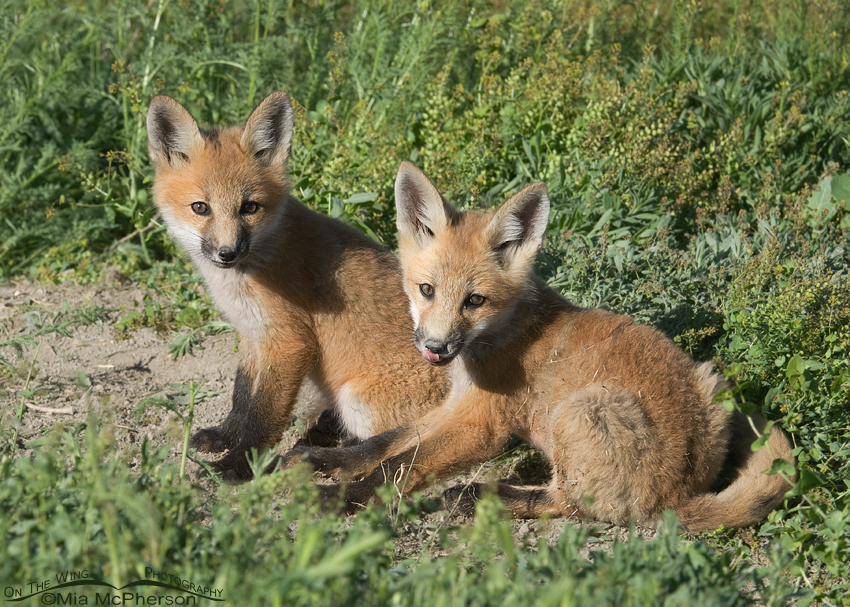 Pair of Red Fox kits – D200, f10, 1/250, ISO 250, 200-400mm VR at 240mm, natural light, not baited
Pair of Red Fox kits – D200, f10, 1/250, ISO 250, 200-400mm VR at 240mm, natural light, not baited
Late last spring I had a wonderful opportunity to photograph young Red Fox kits at Bear River National Wildlife Refuge in northern Utah. There was a den along a road on a dike with at least four kits in it and I was able to photograph them for just over an hour.
Other than one fox that I met while out on a hike through some grasslands in Germany these were the closest I had ever been to a fox outside of a zoo, let alone kits. I was thrilled.
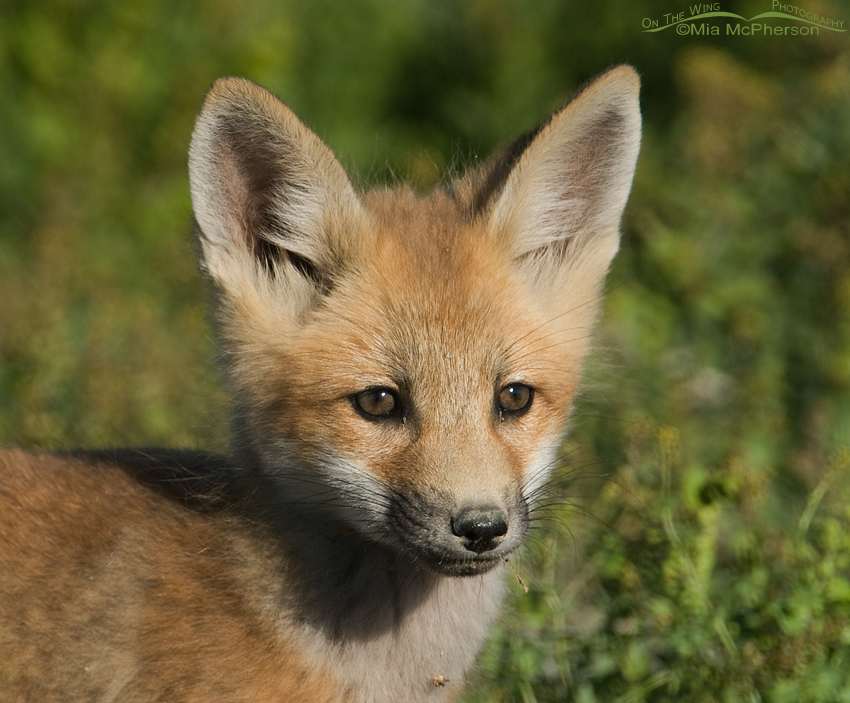 Red Fox kit portrait – D200, 1/500, ISO 320, 200-400mm VR with 1.4x TC at 400mm, natural light, not baited
Red Fox kit portrait – D200, 1/500, ISO 320, 200-400mm VR with 1.4x TC at 400mm, natural light, not baited
The red fox, Vulpes vulpes, is widely distributed throughout Asia, Europe, and North America. The species is common in Utah though they are probably not seen as often as the Coyote is. Red foxes eat a wide variety of foods, including birds, small mammals, carrion, berries, insects and are opportunistic enough to raid trash cans and other human refuse.
The kits I photographed were very curious and at times would get too close to photograph with my teleconverter on, so soon after I started taking images I had to take my teleconverter off in order to get them in the frame without clipping and even then I had difficulties.
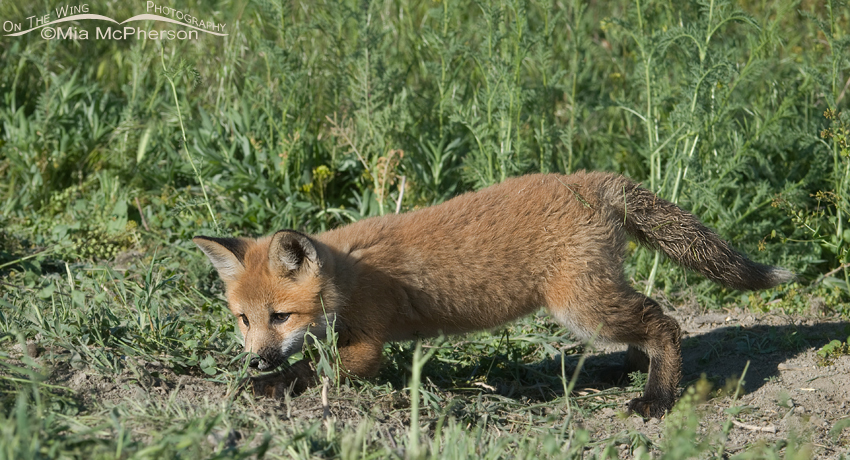 Red Fox kit practicing stalking skills – D200, f8, 1/350, ISO 250, 200-400mm VR at 220mm, natural light, not baited
Red Fox kit practicing stalking skills – D200, f8, 1/350, ISO 250, 200-400mm VR at 220mm, natural light, not baited
The fox kits were very active, play fighting with each other, rolling in the weeds and dust and practicing their stalking skills. Red foxes are born in a den in the spring, are weaned after about a month but stay close to the den for the first 6 – 7 months. The photo above shows the runt of the litter, it was smaller than all the other kits we observed.
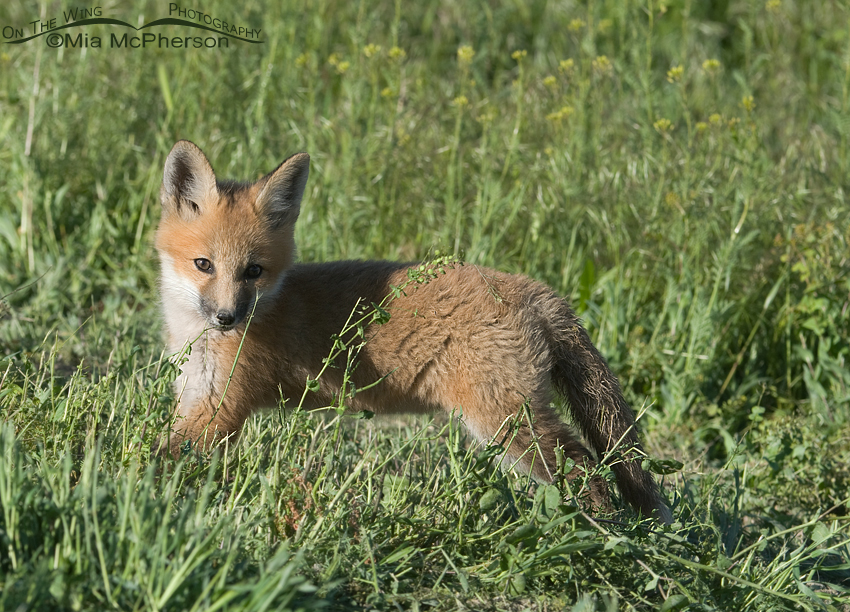 Red Fox kit nibbling a weed – D200, f8, 1/320, ISO 250, 200-400mm VR at 200mm, natural light, not baited
Red Fox kit nibbling a weed – D200, f8, 1/320, ISO 250, 200-400mm VR at 200mm, natural light, not baited
Red Foxes are not always red, but can be reds, brown and blacks, along with paler versions of those colors and the “silver fox” that has dark fur with silvery guard hairs. The red fox can be distinguished from other fox species by the characteristic white tip on the end of the tail. The colors variations are genetic and can occur even among the kits from the same litter. All of the kits I saw at this den were a pale reddish shade, some of that paleness may have been that they had rolled in the light colored soil outside of their den.
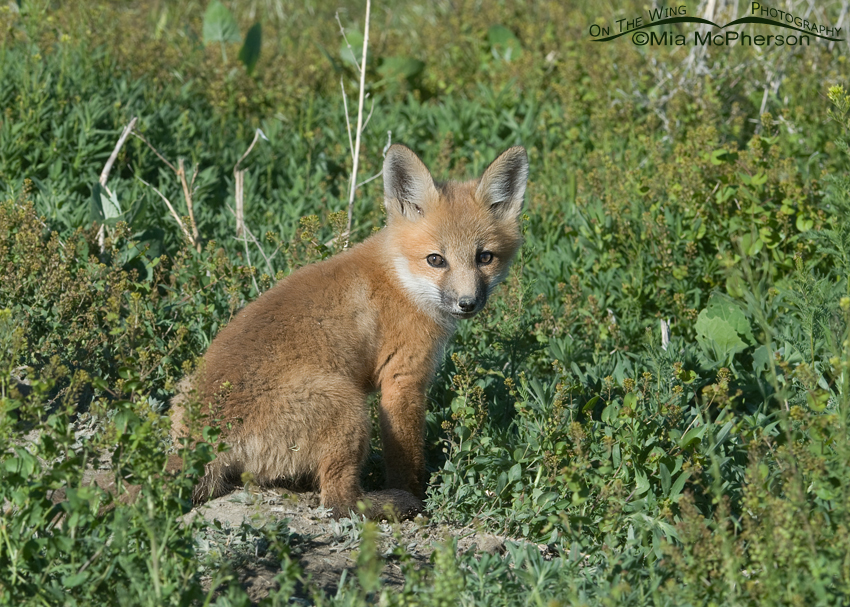 Red Fox kit taking a break from play – D200, f9, 1/250, ISO 250, 200-400mm VR at 200mm, natural light, not baited
Red Fox kit taking a break from play – D200, f9, 1/250, ISO 250, 200-400mm VR at 200mm, natural light, not baited
Watching these young kits interact with each other, observing their behavior and photographing them was mounds of fun and each time I look at these images I get a big grin on my face. I hope that next spring I will find another den.
Life is good.
Mia
Click here to see more of my Red Fox photos plus facts and information about this species.


Hi! I surely enjoy all the great pictures! Keep up the great shots!
Thank you Mom!
paragraphy? hmm … must need sleep
LOL, I have often felt that way when making comments while I wasn’t quite wide awake.
Beautiful images Mia. I was smiling from the first one and smiled even more with your last paragraphy
Thanks Kim, these kits are adorable!
You do amazing photography! I love all your work. I too love to take photos of the wildlife here where I live. I live in amazing place to photograph the birds, ducks, and other wildlife, too. But I haven’t learned enough about digital photgraphy yet to get as good of shots as you. I need to learn lots more!
They are sooooo cute!!
Thanks Judy, I think they are cute too.
Stunning work. That lens is making me quite jealous
Thank you Preston!